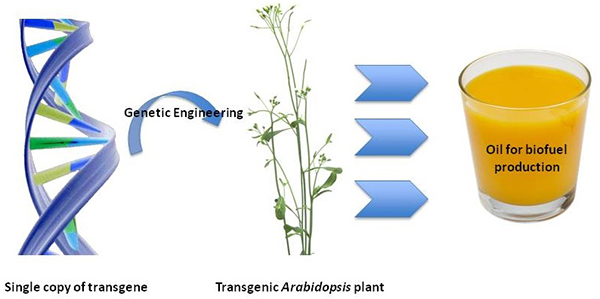Triacylglycerols from plants can be used to produce environmentally friendly and renewable biodiesel. Therefore, there has been great interest in using genetic engineering to enhance triacylglycerol levels in plant vegetative tissues. A team at the Tokyo Institute of Technology led by Mie Shimojima and Yuka Madoka recently developed a lipid remodeling system that could be introduced in transgenic plants to boost the levels of triacylglycerol production in leaves and roots.
Phosphate starvation is the key to enhancing triacylglycerol levels in vegetative tissues
Phosphorous is an essential mineral for plants. Plants usually obtain their phosphorous source in the form of a phosphoric acid salt, known as inorganic phosphate. During inorganic phosphate deficiency, cell membrane materials called phospholipids are broken down to free up phosphorous. At the same time, accumulation of triacylglycerols is induced. However, most plant triacylglycerols are synthesized and stored in seeds, which constitute only a small part of the plant. Moreover, while triacylglycerols are also synthesized in non-seed plants, their concentrations are usually very low in vegetative tissues such as leaves.
Starting with Arabidopsis
The team started out by comparing how the Arabidopsis—a type of small flowering plant related to cabbage and mustard—responds to inorganic-phosphate- and nitrogen-depleted conditions. While both conditions resulted in triacylglycerol accumulation, the biomass of plants grown under nitrogen-depleted conditions was markedly lower than that under inorganic phosphate starvation. Furthermore, chloroplasts were not severely damaged during inorganic phosphate deficiency. Using these findings, the researchers created a lipid remodeling system and introduced it into transgenic Arabidopsis plants. These transgenic plants showed higher levels of triacylglycerol accumulation compared with the typical form of the plant.

A step forward for biofuel energy
Other studies have shown an increase in triacylglycerol levels in vegetative tissues; however, these studies required soil with adequate nutrients for plant growth. Notably, the team at Tokyo Tech was able to achieve results by using nutrient-depleted growth conditions and by modifying only a single gene that was introduced into the transgenic plants in this study. These results show great promise because introducing more genes could further elevate triacylglycerol levels in the plants. Furthermore, the team is currently investigating whether this novel lipid remodeling system can be applied to crop plants. If successful, the production and subsequent consumption of biodiesel at economically viable levels may be a reality in the not-too-distant future.
Reference
Authors:
Mie Shimojima, Yuka Madoka, Ryota Fujiwara, Masato Murakawa, Yushi Yoshitake, Keiko Ikeda, Ryota Koizumi, Keiji Endo, Katsuya Ozaki and Hiroyuki Ohta
Title of original paper:
An engineered lipid remodeling system using a galactolipid synthase promoter during phosphate starvation enhances oil accumulation in plants
Journal:
Frontiers in Plant Science
DOI: 10.3389/fpls.2015.00664
Source
Tokyo Institute of Technology, press release, 2015-09-07.
Supplier
Frontiers in Plant Science
Tokyo Institute of Technology
Share
Renewable Carbon News – Daily Newsletter
Subscribe to our daily email newsletter – the world's leading newsletter on renewable materials and chemicals













